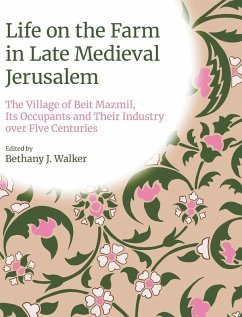Studies of Jerusalem in the post-classical periods have traditionally centered, unsurprisingly, on the Old City, isolating it from the regional setting in which it operated on a daily basis. The agricultural hinterland of Jerusalem-comprising a network of smaller settlements, agricultural terraces, fields, cisterns, watch towers, and local marketplaces that together fed the city-has not been a focus of archaeological research until very recently. Life on the Farm in Late Medieval Jerusalem offers a rare glimpse into the daily life of a single rural household and its intimate, but ever-evolving, relationship with Jerusalem from the 14th to the early 20th centuries. It does so through a tightly integrated, multi-disciplinary study of the astonishingly well-preserved remains of a village in its agricultural setting, showing how both settlement and farmland developed together over time, and how these changes impacted the socio-economic development of Jerusalem during the Mamluk and Ottoman sultanates. The life history of this place is written on the basis of archaeological, botanical, and geological data, all interpreted against a rich textual record of land sales, field development, conflict, and cooperation.
Bitte wählen Sie Ihr Anliegen aus.
Rechnungen
Retourenschein anfordern
Bestellstatus
Storno

